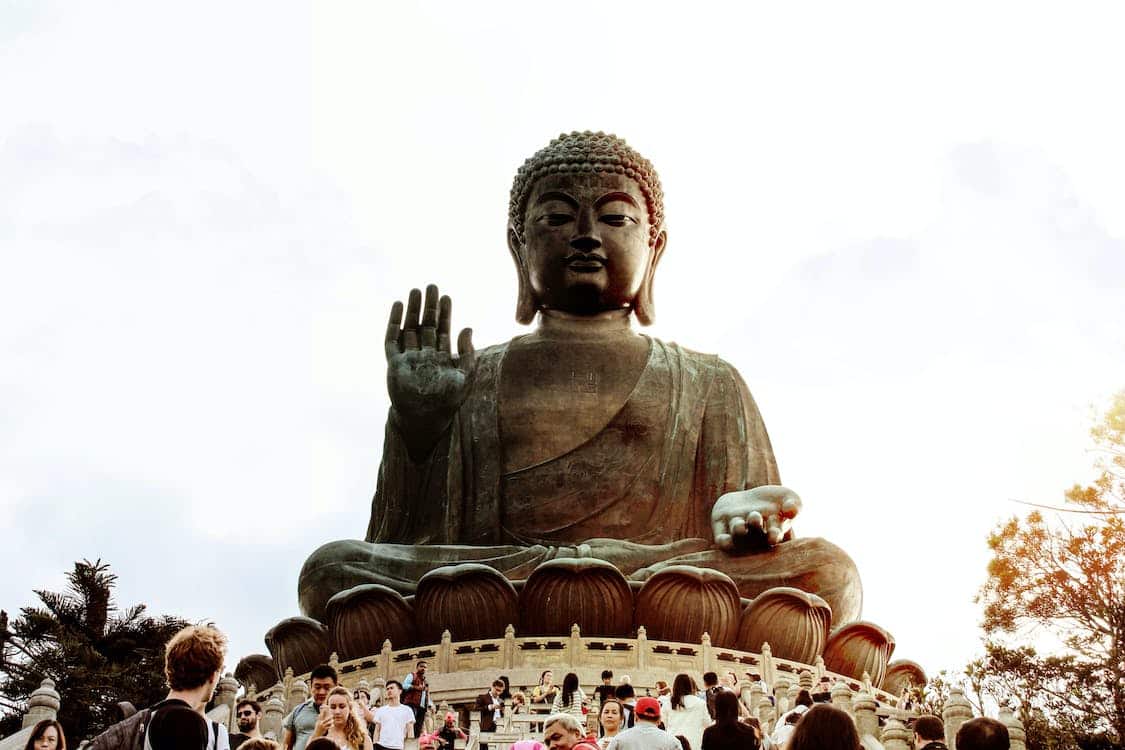
Spirituality
Buddha and the Attack of Mara
When you close your eyes and picture a statue of Buddha, what likely appears is the image of a serene, enlightened figure seated beneath the sprawling branches of a banyan tree. Well, for ancient artists, this was the go-to moment to carve when showing Buddha — the moment he became the wise one.
But here’s something you might not know: before reaching that enlightening point, Buddha had to face off with a powerful being called Mara. This is the story of how a prince named Siddhartha became Buddha after a big fight with a demon.
The Story of Buddha and Mara
Under the sacred Bodhi Tree, Siddhartha Gautama, destined to be the Buddha, embarked on a transformative journey. Determined to unravel the mysteries of existence and alleviate the suffering of all beings, Siddhartha entered into deep meditation. Gods appeared above him, praising his determination.
Mara, with his fierce armies, including a monstrous elephant, tried to attack Gautama. All the gods and creatures praising Gautama scattered in fear. Mara had ten armies with different generals, such as craving, discontent, thirst, laziness, fear, doubt, lies, fake pride, and grief. Among these, three were Mara’s daughters—thirst, discontent, and craving.
Seeing the intimidating armies, Gautama, under the Bodhi tree, called upon his ten virtues, also known as the ten perfections. These perfections were the guiding principles that aided him in facing Mara’s fierce armies.
The ten perfections include generosity (Dana), morality (Sheela), renunciation (Nekhamma), insight (Panna), energy (Viriya), patience (Khanti), truthfulness (Sacca), resolution (Adhiṭṭhana), loving-kindness (Metta), and equanimity (Upekkha). These virtues served as powerful allies, helping Gautama overcome the challenges presented by Mara.
Even when Mara threw a final weapon at Gautama, it got converted into a shield of flowers and rested above his head. The dawn was approaching. Witnessing his defeat, Mara falsely accused Gautama, claiming the seat of the complete knowledge belonged to him. To verify the truth, Gautama touched the ground, and the Earth roared, confirming Gautama’s victory.
This event marked the moment of Gautama’s enlightenment, and he became the Buddha.
As a seeker, what can we learn from this story?
-Mara’s attack on Buddha under the Bodhi Tree has a big spiritual lesson. It’s like a battle with inner problems we all face. Mara represents desires, fears, and distractions inside our minds. The attack shows how Buddha overcame these challenges with mindfulness and wisdom.
-Mara’s temptations are like our own struggles — wanting things, fearing things, and holding on to what we have. Buddha’s staying calm during the attack teaches us about staying strong when facing our own inner battles.
-This story reminds us that everyone on a spiritual journey encounters difficulties. Overcoming these challenges needs inner strength and a strong commitment to finding truth. The victory of Buddha over Mara symbolises wisdom overcoming confusion and compassion overcoming desires.
-When Buddha touched the ground, it held a profound meaning. Picture it as making a significant promise, a pledge of utmost importance. Buddha touching the ground was the act of announcing, “Earth, you’re my witness!” It was a way of showing how serious and true what he was doing was.
In spirituality, this touch to the ground carries power. It’s an acknowledgment of being rooted to the Earth, like a deeply grounded tree. Being connected to the Earth keeps you strong and steady, just like a tree doesn’t easily sway in the wind.
Staying grounded is like not letting things push you around easily. It’s about feeling connected to what’s real and important. Just like a tree needs its roots, we need to stay connected to our values and the things that matter. So, when Buddha touched the ground, it was like making a promise to stay strong, connected, and true.
The lesson? On our own journeys, when life throws challenges our way, we can find strength within. Like a tree rooted in the ground, we stay grounded in our values and what truly matters. So, let’s remember this ancient wisdom: face challenges with inner strength, stay true to ourselves, and we’ll find our own light, just like Buddha did.
Namo Buddhay!
Please subscribe to our mailing list to stay connected and receive spiritual information. If you have any queries, please write to us at info@chamundaswamiji.com. You can check out our YouTube channel Chamunda Swamiji, where you can learn Tantra, Mantra, Yantra, and Meditation from His Holiness Shri Chamunda Swamiji. If you seek to learn Shakti Kriya, please register with us, and we will get back to you.
Post a Comment
-
Subscribe to Our Blog
-
Categories
-
Popular Articles
- Dead moth in the house. What universe is trying to tell you?
- Spiritual Meaning of Moth
- Vivah Bandhan Curse – What Is It and How to Spiritually Heal It.
- The Dasa Mahavidyas
- What are Beej Mantras?
- Tripura Sundari | The Dasa Mahavidya
- Maa Bhuvaneshwari | The Dasa Mahavidyas
- The Five Shades of Tantra
- Ramakrishna Paramhansa – The Man who almost became a Woman
- Maa Chinnamasta | The Dasa Mahavidyas



